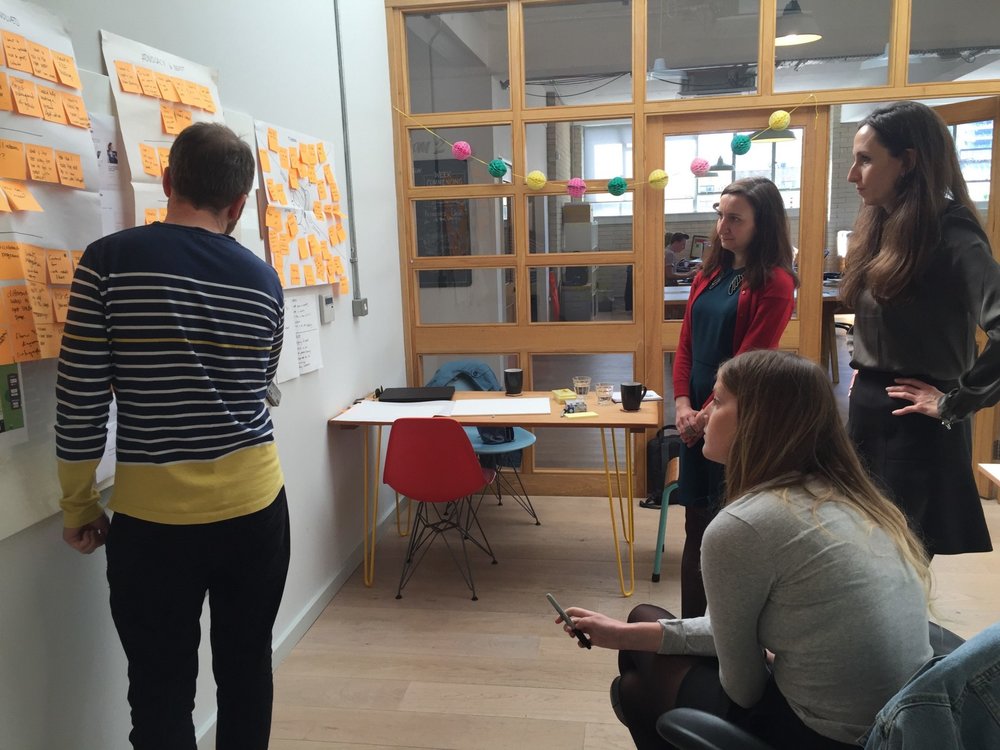
At Furthermore we carry out user research pretty much every week. We believe in using lean methods to get the most insight for our time. This enables us to achieve ongoing validation of our ideas and designs. This post describes how we run research projects or the research phase of a wider development brief.

Meeting the team, receiving our brief and setting objectives are the first steps to project immersion.
We interrogate the brief to ensure we fully understand it’s requirements and opportunities.
From this initial session we plan time and effort and carefully prepare for our deliverables, ensuring the client is kept up to date and is happy with our approach. Relevant communication tools and methods are also agreed at this stage.
Once we have understood the objectives of the brief, we begin with examining any existing desk research, such as analytics data, consumer feedback, metrics or click flow data.
This data is typically quantitative and helps us form our initial hypotheses. If there isn’t any appropriate data available at this stage, then we carry out our own studies, these can include customer surveys and heuristic evaluations.
Buckinghamshire Business First is a recent example of a project where we used a survey to canvas potential users. We needed to find out what it is like to run a business in Buckinghamshire. We learnt the major challenges businesses face, what motivates them and what techniques they use to promote themselves.
This stage sees us explore what it is like to be a user of the product or service. This involves:

An hypothesis, is basically an assumption. Something from to our initial research, that we believe to be true.
These are proven, disproven or refined during our next stage — user testing. The results of the research tell us whether we understand our user’s behaviour and how accurately we understand the potential or the pitfalls of the product or service we are optimising.
We recently spoke at London Tech Week about improving digital products and services, using Hypothesis Driven Design.
User research is an essential step on the way to validate our thinking.
We use a combination of traditional, new and lean methods to gather qualitative insights from users at this stage. These include, face-to-face, guerrilla and online user testing, as well as ethnographic field studies, multi-variant tests, 5-second tests and click-flow analysis.

Captevate, an online video editing tool, is a recent project where we carried out lots of user research. At the end of each week-long sprint, we arranged for users to come in for a face-to-face chat about the prototypes we had created.We also performed 5-second tests to help us fine tune landing page UI and calls to action. Flow tests helped us combine multiple screens into funnels to help identify which elements were causing users difficulty when completing a multi-step processes. Multi-variant testing was used to choose the most appealing subscription packages.
After gathering insights it’s important we analyse our findings. We start by affinity sorting.
This involves gathering all observations and grouping them into similar themes.
These themes are then mapped against our early hypotheses to highlight relationships and establish insights. Referenced against our customer journey map, we ensure we have findings related to each stage of the customer’s journey.
The last step in our research process is to deliver actionable insights. These take the form of refined hypotheses.
Each hypothesis highlights three things, the first part is a statement we believe to be true about the product, service or feature, next is the recommendation we think will improve the situation or create a new opportunity and the final part is where we explain what we expect to see if the recommendation is implemented. Each hypothesis is discussed and priorities given to each one.
At this stage, these hypothesis statements either become our final deliverable or are fed into our design sprints.

User research of all forms is beneficial to creating a compelling product or service. When an idea has had sufficient research during it’s development, the benefits are obvious. So act fast, prototype rapidly and iterate often. Have fun and carry out research in the most lean ways possible.
This little insight was brought to you by our managing partner Steve Johnson.
This post was originally posted on Medium, follow us here.
Furthermore are a product & service design agency headquartered in London. We believe that the research and strategy behind great design is just as important as the design itself. By gathering data and insights to inform our decisions, we help organisations create compelling services and products based on evidence, not opinion. A hypothesis driven design framework helps us achieve this. Please get in touch if you would like to know more. Using our methods we envision unique experiences built on a solid functional foundation that are a pleasure to use and have the potential for meaning, delight and significance in people’s lives.
Get in touch with the team to discuss your idea, project or business.


